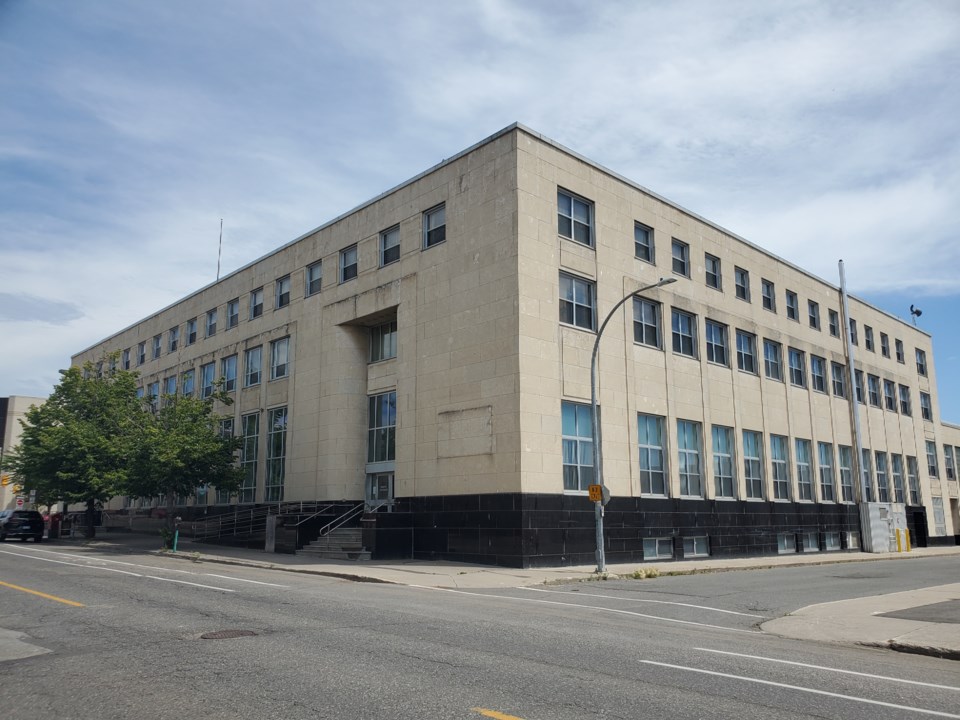THUNDER BAY — Fort William First Nation and Biigtigong Nishnaabeg – formerly Pic River First Nation – have unveiled an ambitious redevelopment plan for a prominent but surplus federal government office building in Thunder Bay.
The First Nations recently took joint ownership of the former Court Street post office, with Biigtigong Nishnaabeg and its agencies having a 75 per cent share, and Fort William the remainder. They hope work will begin this year to convert the three-storey building to accommodate 48 residential units on the upper floors, plus commercial space at ground level.
The two communities created a not-for-profit corporation called Giwaa On Court to acquire the property. In conjunction with the project they have also purchased a parking lot at the corner of Court Street and Pearl Street, across from Tony and Adam's Restaurant.
Ken Ogima, president and CEO of Biigtigong Nishnaabeg's for-profit economic development arm, is also the president of Giwaa On Court. He is a member of Fort William First Nation, where he served as CEO for almost four years.
Ogima says the project in Thunder Bay was one of the first files to land on his desk, and he's excited to see it moving forward.
"I see a great opportunity for Indigenous peoples to stake a claim in the Northwestern Ontario housing market...It only seemed natural to bring the two First Nations together to kind of corner those housing opportunities, housing needs and commercial space."
The 60,000 square foot building was acquired through Canada Mortgage and Housing Corporation under the Federal Lands Initiative. It's a program that supports the transfer of surplus government property to eligible proponents at a discounted-to-no cost for redevelopment as affordable housing.
The First Nations paid $749,000 for the building.
Ogima said at least half the residential units will be designated affordable housing, with the rent set at 75 per cent of the current market rate.
Basil Goodchild, general manager of Pic River Development Corporation, said the initial concept centred mainly on providing safe and affordable housing to members of the First Nations living off-reserve.
Want to read more stories about business in the North? Subscribe to our newsletter.
"Both BN and Fort William have many community members that live in Thunder Bay. We began looking for opportunities, and lo and behold, this opportunity came across. With this landing in Fort William's traditional territory, Chief Duncan Michano thought it would be a great idea to include Fort William First Nation in the project."
Renovation costs could approach $21 million It will cost up to $21 million to retrofit the former post office and other government offices at 33 Court St. South to conform with current building codes. The removal of asbestos has already been accounted for in the estimates. Ogima said CMHC is funding most of the renovation costs.
"Outside that, this group has positioned itself with between five and nine per cent of the overall value as our own equity contribution. We are still short...we have an equity gap of about $1.7 million," he said, adding that he intends to reach out to the province for a contribution.
A call for a contractor has already gone out, with responses due early next month and completion of the housing component expected 18 months after work begins. Ogima said the group wants the spinoff benefits from construction to stay in the Thunder Bay area.
"Every dime that is being spent on this project, it is our mission and mandate to keep that money local....We've had interested groups from Toronto and Winnipeg reach out after having heard there was a tender going out. My intention is to spend local as much as we can."
Local partners such as Resolute Forest Products have already come to the table to offer support services at their cost, with Resolute offering to supply lumber and other building materials with no markup.
As part of the agreement with CMHC, the building's energy footprint must be reduced by 50 per cent by the time renovations are complete.
Cheryl St. James, the economic development officer for Fort William First Nation, said her community appreciates the chance to participate in the project.
"I'm really proud of what we've accomplished," she said. "We're happy to bring some housing to the people of Thunder Bay. I look forward to the building being retrofitted and ready to rent."
Ogima has recently joined the Waterfront District Business Improvement Area. He said it's important to have a seat at that table, especially now.
"This is going to be the largest project in this region, let alone downtown. The anticipated influx of 110-plus residents as well as 300 to 400 day-to-day transient employees in this area is a significant investment for the downtown as well."
